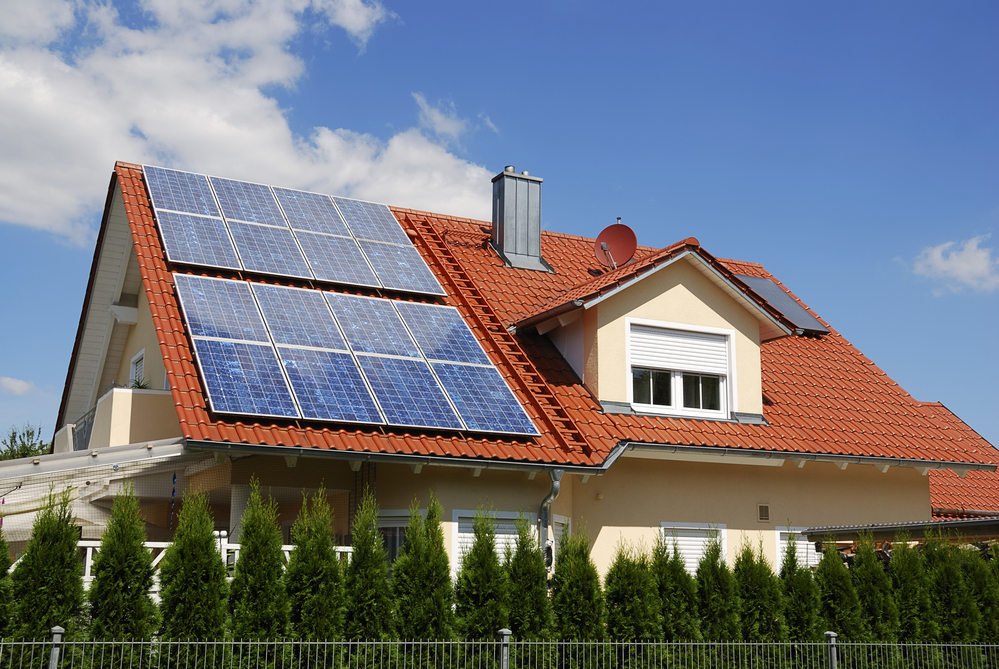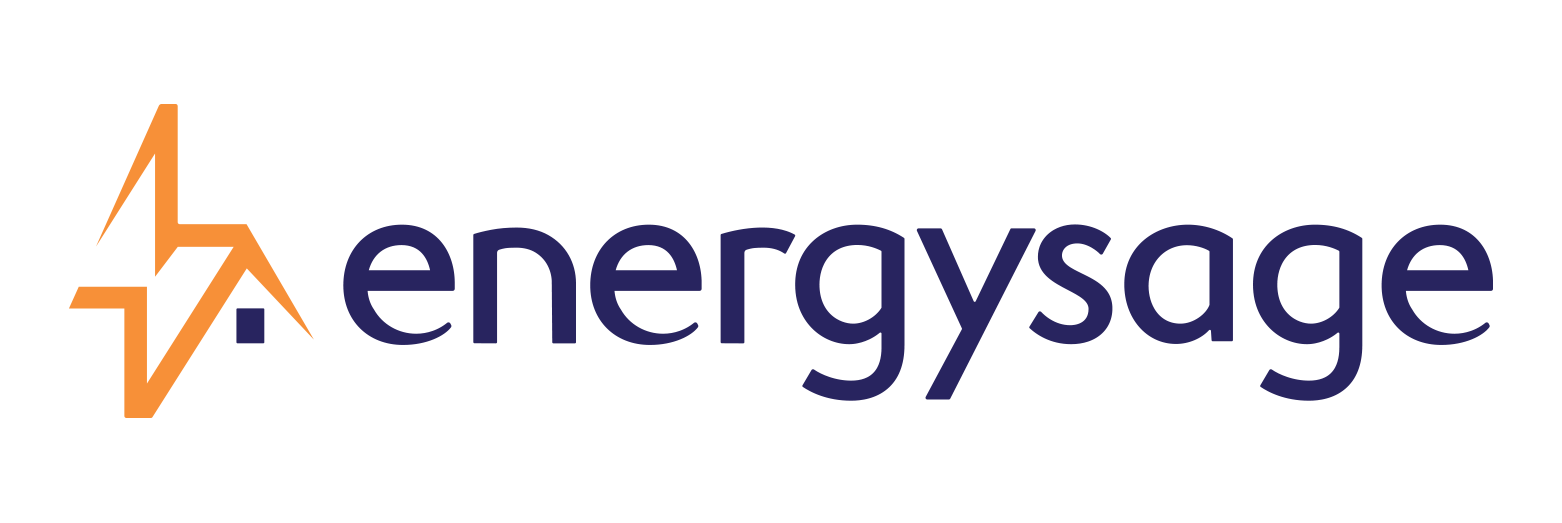

We may earn revenue from the products available on this page and participate in affiliate programs. Learn More ›
What You Need to Know
- To determine how many solar panels you need for your home, you’ll first need to know how much energy you use per year.
- You’ll also need to know the type and wattage of the solar panels you want to install.
- With this information, you can calculate the number of panels you’ll need to power your home.
Q: I’m interested in installing a solar panel system for my home, but I don’t know much about solar panels. How effective are they? How many solar panels power a house?
A: There are plenty of incentives and advantages of solar energy for those who switch from a traditional utility system to a solar-powered one. There are rebates and tax credits, but also the knowledge that you’re helping improve the environment. If you’re wondering, “How many solar panels do I need?” a few essential elements will answer the question. The tips below will help walk you through calculating how many solar panels you need and what factors will affect that number. While calculating these numbers yourself can give you an idea of what kind of solar array you’ll need, know that one of the best solar companies (like Tesla) will do all of these calculations for you if you proceed with installing solar panels.
You’ll need to know three things: your annual energy usage, the solar panel wattage, and the production ratio.
”How much solar do I need?” is an expected question from a homeowner new to solar systems. To figure out exactly how many panels are required to run a home, you will need to consider your annual energy usage, the solar panel wattage, and the production ratio. These three factors are essential when converting to a solar system. While this calculation will give you a ballpark estimate, consider that other factors will affect the actual number of panels, which will be touched on later.
If you’re looking to install a designated solar heating system—one where solar panels heat liquid or air and convert it into central heating for a home—you’ll also need to contact one of the best HVAC companies (such as One Hour Heating & Air Conditioning or Aire Serv) who can convert your existing central heating system to a solar heating one.

Start benefiting from solar.
Bob Vila has partnered with EnergySage to help you compare multiple quotes for rooftop solar panels from vetted installers in your area.Check Free Quotes
Look at your utility bill to determine how many watts you use.
Energy usage is measured in kilowatt-hours (kWh). KWh does not mean the number of kilowatts you use in an hour, but rather the amount of energy you would use keeping a 1,000-watt appliance running for 1 hour. The number of appliances that use power and how often they’re running will affect the usage. Anything plugged into a wall will count toward your energy usage, and bigger appliances like refrigerators and dishwashers use more power than a phone charger. For example, a 50-inch LED television uses around 0.016 kWh per hour, whereas an electric dishwasher will use about 2 kWh per load.
As of 2020 (the most recent year for which data is available), the average American household uses around 10,500 kWh of electricity per year, according to the U.S. Energy Information Administration. But the best way to determine how much power you’ll need is by looking at your utility bills from the past year. This will give you a solid idea of your real-life energy needs, especially as power usage fluctuates throughout the year. The amount of energy you use will dictate the size of the system you need.
While installing solar panels can often reduce or even completely offset your monthly electric bill, remember that electric rates and usage are volatile factors. If the price of electricity or the amount you use drastically changes, your savings could change as well. For example, central to southern California is considered a great place to install solar panels because of the frequent sun—but it also is a state that regularly sees higher electricity prices.
Once you know your home’s energy demands, it’s time to start looking at panels. Look at different panels and see what the wattages are. The solar panel wattage is also known as the power rating, and it’s a panel’s electrical output under ideal conditions. This is measured in watts (W). A panel will usually produce between 250 and 400 watts of power. For the equation later on, assume an average of 320 W per panel.

Use your annual energy consumption and solar panel rating to calculate the production ratio.
You can calculate the production ratio when you have the numbers for your annual energy usage and the solar panel wattage. The production ratio is a system’s estimated energy output over time (measured in kWh) compared to the actual system size (measured in W). To calculate the production ratio, divide the energy output by the system’s total wattage. In the U.S., production ratios tend to fall between 1.3 and 1.6.
Once you have these three numbers, it’s time to calculate the number of panels. The formula is:
Number of panels = system size / production ratio / panel wattage
For example, using 10,649 kWh (the average energy usage of an American household), 1.3 (the low end of common production ratios), and 320 W (the average wattage of a solar panel):
Number of panels = 10,649 kWh / 1.3 / 320 W = 25.6
From this calculation, you can estimate that a house with these power requirements would need about 25 panels that produce 320 W.
Take the amount of sun your home receives into consideration.
Remember that this calculation assumes that the panels are running under optimum conditions. More direct sunlight means your home can convert more energy into electricity. In states like Arizona and New Mexico, which are known to produce more sunlight than states in the Northeast, homeowners will likely need fewer solar panels. Nevada, Utah, California, Texas, and Colorado are other locations that usually produce more sunlight. But even if you live in a region or state with long winters or one that’s outside of the Sun Belt, you may need to purchase more solar panels to effectively run the home.
The size, shape, and material of your roof will also affect the best placement of solar panels. The ideal roof has no shade coverage from trees and large amounts of space facing south, west, or east—these are the directions that receive the most sunlight throughout the day in the northern hemisphere. Roofs with steep pitches make installing solar panels more difficult and can mean that an installer may not be able to fit as many panels on the roof. The same goes for oddly shaped roofs.
The number of solar panels you need will also depend on if your home will be on-grid or off-grid.
Often the more popular option, on-grid solar panel systems are connected to the public utility grid. If there isn’t enough sun to provide full power, the house can pull energy from the traditional grid, so it doesn’t have to go without electricity. On the other hand, an off-grid system is not connected to the public grid and is more common in rural or remote locations.

Off-grid systems rely on batteries to store power to keep the house running at night or on cloudy days. Off-grid systems will likely need more panels to run the house and store up excess energy. On-grid or off-grid systems can affect the overall cost of your solar power system.
Figuring out how much solar battery capacity you need is a task unto itself. Not enough capacity and you’ll run out of power in the middle of the night, but too much and you’ll add unnecessary complexity and maintenance costs. The number of batteries you need will also depend on the type of battery you choose. Lead acid batteries are more cost-effective, but lithium-ion batteries have better capacity, efficiency, and lifespan.
The type of solar panel will affect its efficiency.
There are three types of solar panels available: monocrystalline, polycrystalline, and thin film. Monocrystalline and polycrystalline panels are both composed of cells made out of silicon. The silicon pieces are assembled to form a rectangle and covered with a glass sheet. Monocrystalline solar cells are cut from a single silicon crystal, while polycrystalline cells are composed of fragments of silicon crystals. This difference in construction affects the efficiency and price. Monocrystalline panels are more efficient and perform better, but they’re also more expensive. Polycrystalline solar panel prices are more affordable, but you’ll compromise a bit on efficiency and performance.
There are also thin-film solar panels. Like the name suggests, the cells are thinner than monocrystalline or polycrystalline. However, the actual panel itself may not be significantly thinner than other styles of panels. Thin-film panels are more portable and flexible than either monocrystalline or polycrystalline, but they’re less efficient. Different panels will have different pros and cons depending on your home, geographic location, and more, and your solar installer will be able to give you advice on what’s best suited for you.
While this guide can give you general information about the number of panels, solar panel sizes, and types of systems you might consider, remember that a qualified solar power installer will be able to give you more information that’s specific to your home. Many variables play into how efficient solar systems are, and it can be difficult to take all of those into consideration when you’re not experienced. However, in many cases, solar panels are worth it for the energy they save and the peace of mind that comes from cutting the cord on fossil fuels.
